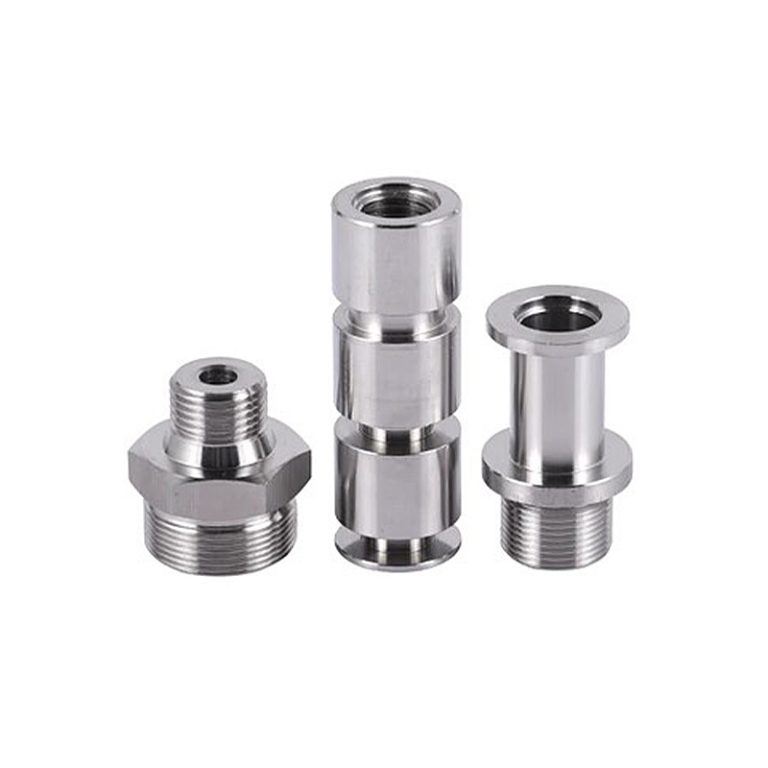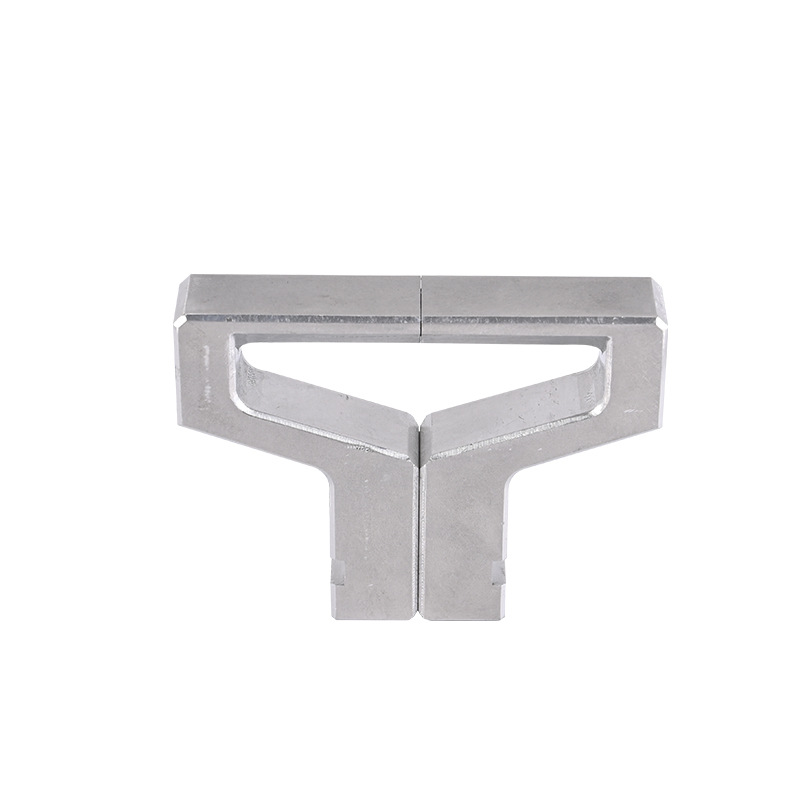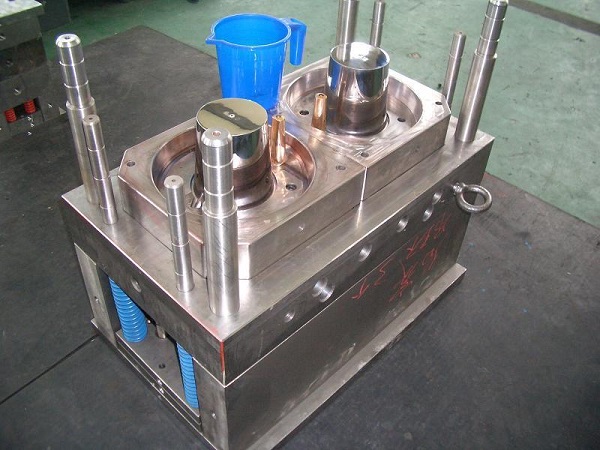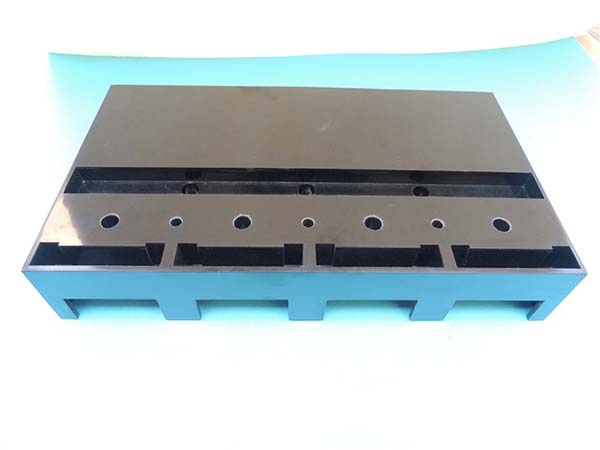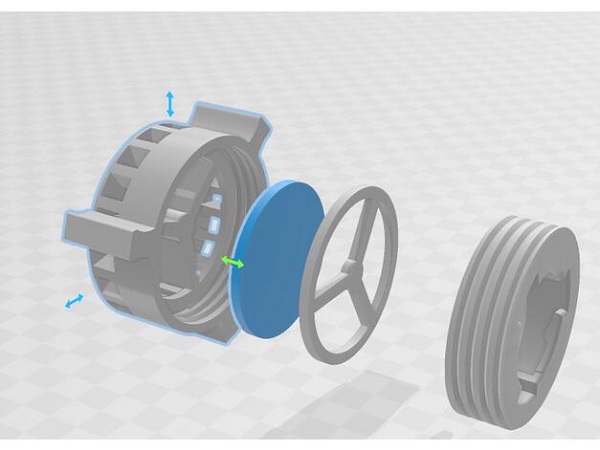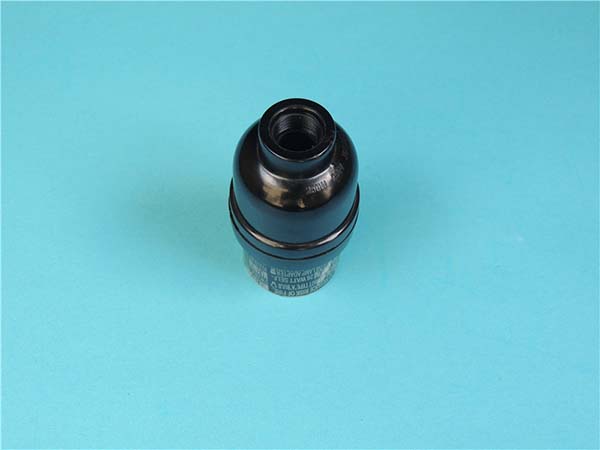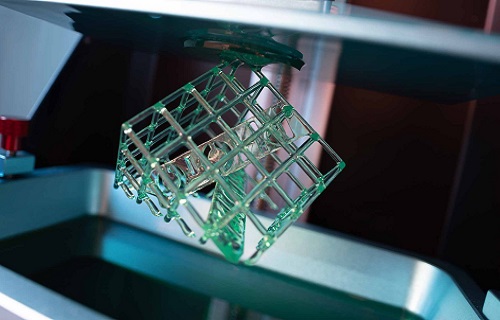1. Introduction
The aerospace industry has always been at the forefront of technological innovation, constantly striving to push the boundaries of what is possible in flight and space exploration. In recent years, 3D printing, also known as additive manufacturing, has emerged as a revolutionary technology that is transforming the aerospace landscape. This article delves into the profound ways in which 3D printing is propelling innovation in aerospace, from design optimization to cost - reduction and enhanced manufacturing efficiency.
Traditionally, aerospace manufacturing has relied on subtractive manufacturing processes, such as machining, where material is removed from a larger block to create the desired part. These methods have been effective but come with limitations. They often generate a significant amount of waste material, are time - consuming, especially for complex geometries, and can be costly due to the need for multiple machining operations and high - precision tools.
3D printing, on the other hand, builds parts layer by layer from a digital model, adding material only where it is needed. This fundamental difference in approach has opened up new possibilities for the aerospace industry, enabling the creation of components that were previously difficult or impossible to manufacture using traditional methods. The use of 3D printing in aerospace is not just a passing trend; it is a game - changer that is redefining the rules of aircraft and spacecraft design and production.
2. Understanding 3D Printing Technology
2.1 Common 3D Printing Technologies in Aerospace
Several 3D printing technologies have found their niche in the aerospace industry, each with its own set of characteristics that make it suitable for specific applications.
Selective Laser Sintering (SLS)
- Working Principle: SLS uses a high - power laser to sinter powdered materials, such as nylon, metal, or ceramic powders, layer by layer. The laser selectively fuses the powder particles together based on the digital model, creating a solid three - dimensional object. For Yigu Technology example, in a typical SLS process for an aerospace component, a thin layer of metal powder is spread evenly across a build platform. The laser then scans the surface of the powder layer, melting and bonding the particles in the areas corresponding to the cross - section of the component being printed.
Selective Laser Melting (SLM)
- Working Principle: SLM is similar to SLS, but instead of sintering the powder, it fully melts the metal powder using a high - energy laser. Each layer of powder is melted and fused to the previous layer, creating a fully dense metal part. For Yigu Technology example, when manufacturing a turbine blade for an aircraft engine, the SLM machine precisely controls the laser to melt the metal powder in a specific pattern layer by layer, gradually building up the complex shape of the blade.
Electron Beam Melting (EBM)
- Working Principle: EBM uses an electron beam in a vacuum environment to melt metal powder. The electron beam is generated by an electron gun and is focused on the powder bed. As the beam scans the powder, it melts the particles, layer by layer, to form the desired component. For example, when manufacturing a large - scale aerospace structural component, the EBM process starts with a layer of metal powder being spread on the build platform. The electron beam then melts the powder according to the pre - programmed digital model, and subsequent layers are added in the same manner.
The following Yigu Technology table provides a summary comparison of these common 3D printing technologies in aerospace:
| 3D Printing Technology | Material | Precision | Build Speed | Cost | Complex Geometry Capability |
| SLS | Polymers, metals, composites | Moderate | Moderate | Medium - High | High |
| SLM | Metals | High | Slow | High | High |
| EBM | Metals | Moderate - High | Fast | High | High |
3. The Advantages of 3D Printing in Aerospace
3.1 Cost - Efficiency
One of the most significant advantages of 3D printing in aerospace is its cost - efficiency, especially when compared to traditional manufacturing methods. In traditional aerospace manufacturing, the production of complex components often requires the use of expensive molds and fixtures. For example, in the production of a typical aircraft engine component, the cost of designing and manufacturing a mold can reach hundreds of thousands of dollars. In contrast, 3D printing eliminates the need for most molds. A study by [Research Institution Name] found that for small - to - medium - scale production runs (less than 1000 units), 3D printing can reduce tooling costs by up to 90%.
3.2 Design Flexibility
3D printing offers unprecedented design flexibility in aerospace, unshackled by the limitations of traditional manufacturing techniques. Traditional manufacturing methods, such as casting and forging, have restrictions on the shapes and structures that can be produced. For example, creating a part with internal channels or complex lattice structures using traditional methods is extremely challenging, often requiring multiple components to be fabricated separately and then assembled.
3.3 Time - Saving in Production
The production time in aerospace manufacturing can be significantly reduced through 3D printing. Traditional manufacturing processes for aerospace components typically involve multiple steps, including machining, heat - treatment, and assembly. These processes can be time - consuming, with the production of a single complex part often taking weeks or even months.
3.4 Customization Capability
Customization is another area where 3D printing shines in the aerospace industry. Different aircraft models or spacecraft may have unique requirements for components, and 3D printing allows for the easy customization of parts. For example, commercial airlines can use 3D printing to create customized interior components such as passenger seats. These seats can be designed to fit the specific dimensions of different aircraft models and can also be tailored to meet the comfort and safety requirements of passengers. Some airlines have used 3D printing to create seats with personalized ergonomic designs, providing better support for passengers during long - haul flights.
4. 3D Printing Applications in Aerospace
4.1 Aircraft Engine Components
Aircraft engines are some of the most complex and high - performance machines ever created, and the components within them must withstand extreme conditions, including high temperatures, pressures, and rotational forces. 3D printing has found significant applications in manufacturing aircraft engine components, with GE Aviation's LEAP engine fuel nozzle being a prime example.
The LEAP engine, developed by CFM International (a 50 - 50 joint venture between GE Aviation and Safran Aircraft Engines), is a next - generation commercial aircraft engine that powers several popular airliners, including the Boeing 737 MAX, Airbus A320neo, and the Chinese Comac C919. The fuel nozzle in the LEAP engine is a critical component that plays a crucial role in the combustion process. It is responsible for accurately metering and spraying fuel into the combustion chamber, ensuring efficient and stable combustion.
Before the adoption of 3D printing, the fuel nozzle for the LEAP engine was a complex assembly of about 20 individual parts. These parts had to be manufactured separately using traditional manufacturing methods such as casting and machining and then assembled together. This process was not only time - consuming but also costly, as it required multiple machining operations, precise alignment during assembly, and quality control checks at each stage.
GE Aviation revolutionized the production of the fuel nozzle by using 3D printing technology, specifically the Selective Laser Melting (SLM) process. With SLM, the entire fuel nozzle can be printed as a single, integrated part directly from a digital model. This approach eliminated the need for multiple parts and the associated assembly processes, resulting in a significant reduction in production time and cost.
In terms of production scale, GE Aviation has demonstrated the viability of 3D - printed fuel nozzles for high - volume production. As of [latest data], they have produced over 100,000 3D - printed fuel nozzles for the LEAP engine, with the production process achieving high levels of consistency and quality control. This large - scale production success has not only solidified the position of 3D printing in aircraft engine component manufacturing but has also inspired other aerospace companies to explore similar applications.
4.2 Aircraft Structural Components
The use of Yigu Technology 3D printing in aircraft structural components is another area where significant progress has been made. Boeing, one of the world's leading aerospace companies, has been actively exploring and implementing 3D printing technology in the production of its aircraft, with the Boeing 787 Dreamliner being a notable example.
The Boeing 787 Dreamliner is a long - range, wide - body twin - engine jet airliner known for its advanced design, fuel efficiency, and passenger - friendly features. In an effort to further enhance the aircraft's performance and reduce its environmental impact, Boeing has incorporated 3D - printed components into the 787's structure.
One of the key benefits of using 3D - printed structural components in the 787 is weight reduction. Traditional aircraft manufacturing often involves the use of large, heavy metal parts that are machined from solid blocks of material. This process not only generates a significant amount of waste but also results in heavier components. With 3D printing, Boeing can design and manufacture components with optimized geometries, such as lattice structures and hollow sections, that maintain the necessary strength and stiffness while reducing weight. For example, some of the brackets, fittings, and interior components in the 787 are 3D - printed, and these parts can be up to 40% lighter than their traditionally manufactured counterparts.
The weight reduction achieved through 3D - printed components directly contributes to improved fuel efficiency. Lighter aircraft require less fuel to operate, which not only reduces operating costs for airlines but also decreases carbon emissions. According to Boeing's estimates, the use of 3D - printed components in the 787 Dreamliner has helped to reduce fuel consumption by approximately 1 - 2%. Over the lifespan of an aircraft, this small percentage improvement in fuel efficiency can result in substantial savings in fuel costs and a significant reduction in the aircraft's carbon footprint.
In addition to weight reduction and fuel efficiency, 3D - printed structural components also offer design flexibility and customization options. Boeing can create components that are specifically tailored to the unique requirements of the 787, such as components with complex shapes that are difficult or impossible to manufacture using traditional methods. This design flexibility allows for better integration of components into the overall aircraft structure, improving aerodynamics and structural integrity.
4.3 Drone Manufacturing
The drone (unmanned aerial vehicle, UAV) industry has experienced explosive growth in recent years, driven by applications in various fields such as photography, videography, agriculture, delivery services, and surveillance. 3D printing has emerged as a valuable technology for drone manufacturers, enabling them to rapidly produce prototypes, optimize designs, and manufacture small - batch production runs with enhanced performance.
One of the primary advantages of 3D printing in drone manufacturing is the ability to quickly create prototypes. Traditional manufacturing methods for drone prototypes, such as injection molding or CNC machining, can be time - consuming and expensive, especially for small - scale operations. With 3D printing, drone designers can turn their digital designs into physical prototypes in a matter of hours or days. This rapid prototyping capability allows for quick design iterations and testing. For example, a drone manufacturer can print a prototype of a new drone frame design, test its aerodynamics and structural integrity, and then make design modifications based on the test results. This iterative process can be repeated multiple times in a short period, leading to a more refined and optimized final design.
3D printing also enables the production of complex geometries in drone components. Drones often require components with intricate shapes, such as lightweight and aerodynamic frames, custom - designed propellers, and integrated sensor mounts. Traditional manufacturing methods may struggle to produce these complex shapes accurately or may require multiple parts to be assembled, which can increase weight and complexity. 3D printing, on the other hand, can create these components as single, integrated parts with high precision. For instance, some drone manufacturers use 3D printing to create lattice - structured frames. These lattice structures provide excellent strength - to - weight ratios, making the drone lighter and more maneuverable while maintaining structural integrity.
In terms of small - batch production, 3D printing offers cost - effectiveness and flexibility. For drone manufacturers that produce small - scale or specialized drones, setting up traditional manufacturing processes for mass production may not be economically viable. 3D printing allows them to produce small batches of drones or components without the need for expensive tooling and large - scale production facilities. Additionally, 3D printing enables customization of drones for specific applications. For example, a drone used for agricultural spraying can be customized with a larger payload capacity and specialized nozzles, while a drone for aerial photography can be optimized for stability and image quality.
5. Comparison between Traditional Manufacturing and 3D Printing
When considering the adoption of 3D printing in the aerospace industry, it is essential to understand how it compares to traditional manufacturing methods. The following Yigu Technology table provides a detailed comparison in several key aspects:
| Comparison Aspect | Traditional Manufacturing | 3D Printing |
| Cost Structure | High initial tooling costs for molds and fixtures. High material waste, especially for complex parts, leading to increased material costs. Labor - intensive, resulting in high labor costs for machining and assembly. Economies of scale are significant; costs per unit decrease with large production volumes. | Low or no tooling costs as parts are printed directly from digital models. Minimal material waste as material is only added where needed. Reduced labor requirements due to high automation, leading to lower labor costs, especially for small - batch production. Cost per unit is relatively stable and may be more cost - effective for small - scale production runs. |
| Design Constraints | Limited design flexibility. Complex geometries are difficult and costly to produce, often requiring multiple parts and assembly. Design changes can be time - consuming and expensive as they may involve modifying or remaking molds and fixtures. | High design flexibility. Can create highly complex geometries, including internal channels, lattice structures, and integrated features, in a single build. Design changes are relatively easy and cost - effective; only the digital model needs to be updated. |
| Production Time | Long production cycles. Multiple machining operations, heat - treatment, and assembly steps are required, which can take weeks or months, especially for complex components. Prototyping can be time - consuming as it involves creating molds or fixtures first. | Short production cycles. Can rapidly produce parts, especially for prototypes, often in a matter of hours or days. Ideal for quick design iterations and small - batch production, reducing the overall product development time. |
| Customization Capability | Difficult and costly to customize parts for each specific application. Mass - production is more focused on standardization. | Highly customizable. Can produce parts tailored to specific requirements, whether for different aircraft models, spacecraft missions, or individual customer needs. Spare parts can be produced on - demand, reducing inventory requirements. |
| Material Selection | Wide range of available materials, but some high - performance materials may be difficult to process using traditional methods. Material waste can be a concern, especially for expensive materials. | A growing range of materials available, including high - performance metals, polymers, and composites. Some materials are specifically developed for 3D printing. Material utilization is high, minimizing waste of expensive materials. |
| Part Complexity | Producing parts with complex internal structures or integrated features is challenging and may require multiple manufacturing processes and assembly. | Well - suited for manufacturing parts with complex internal and external structures. Can create parts with intricate details and integrated functions in a single, seamless process. |
| Surface Finish and Precision | Generally can achieve high surface finish and precision, especially with advanced machining techniques. However, complex geometries may require additional post - processing to meet precision requirements. | Surface finish of 3D - printed parts may be relatively rough initially, often requiring post - processing such as machining, polishing, or chemical treatment to achieve high - precision and smooth surface finishes. Precision can vary depending on the 3D printing technology used, but some advanced 3D printers can achieve high levels of precision. |
| Production Volume Suitability | Economical for high - volume production due to the ability to spread out the high initial tooling and setup costs over a large number of units. | More cost - effective for small - batch production and prototyping. As production volume increases, the cost per unit advantage of traditional manufacturing may become more significant, although 3D printing is still competitive for complex and customized parts even in moderate production volumes. |
For Yigu Technology example, in the production of a small - batch of aircraft engine components, traditional manufacturing might require the creation of expensive molds and a long production process with multiple machining and assembly steps. If a design change is needed during the development phase, the cost of modifying the molds and re - engineering the production process can be substantial. In contrast, 3D printing can quickly produce the components directly from a digital model. If a design change is required, it can be easily implemented by simply updating the digital file, and the new components can be printed in a short time. This flexibility and speed in design iteration and production are major advantages of 3D printing over traditional manufacturing, especially in the aerospace industry where innovation and time - to - market are crucial factors.
8. Conclusion
Yigu Technology 3D printing has emerged as a transformative force in the aerospace industry, bringing about a paradigm shift in the way aircraft and spacecraft components are designed, manufactured, and maintained. The technology offers a plethora of advantages, including cost - efficiency, design flexibility, time - saving in production, and customization capabilities, which have made it an attractive option for aerospace companies worldwide.
In terms of cost - efficiency, 3D printing reduces tooling costs, minimizes material waste, and cuts down on labor requirements, especially for small - batch production. Its design flexibility enables the creation of complex geometries, integration of multiple functions into a single part, and the application of topological optimization, leading to lighter and more efficient components. The time - saving aspect of 3D printing, both in prototype development and small - batch production, accelerates the innovation cycle in aerospace. Additionally, the ability to customize components for specific aircraft models, spacecraft missions, or individual requirements further enhances the technology's value.
FAQ
- Q: What are the most common 3D printing materials used in aerospace?
A: The most common materials are metals like titanium alloys, aluminum alloys, and nickel - based superalloys due to their high strength - to - weight ratio and excellent high - temperature performance. Polymers such as nylon are also used for non - structural components, and composites are increasingly being explored for their combined properties.
- Q: How does 3D printing ensure the quality and reliability of aerospace components?
A: Quality control measures include in - process monitoring of the 3D printing process, such as monitoring the temperature and density of the printed layers. Post - processing inspections, including non - destructive testing methods like X - ray and ultrasonic testing, are also carried out to detect any internal defects. Additionally, the development of standardized processes and quality management systems helps ensure the reliability of 3D - printed aerospace components.
- Q: What are the future trends of 3D printing in the aerospace industry?
A: Future trends include the development of multi - material 3D printing to create components with a combination of different material properties. There will also be an increased focus on integrating 3D printing with other advanced technologies like artificial intelligence for process optimization. Moreover, the use of 3D printing for on - demand manufacturing of spare parts both on Earth and potentially in space is expected to grow.
